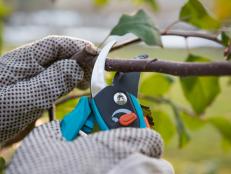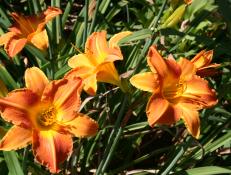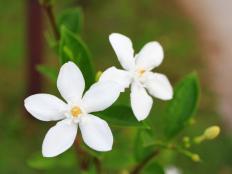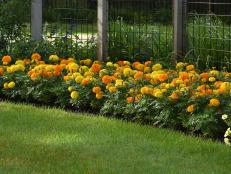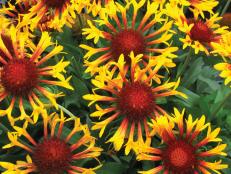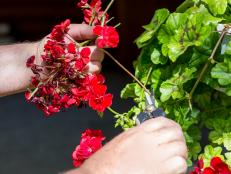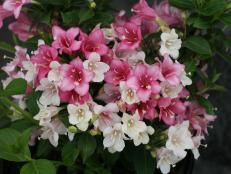Wildflower Gardening
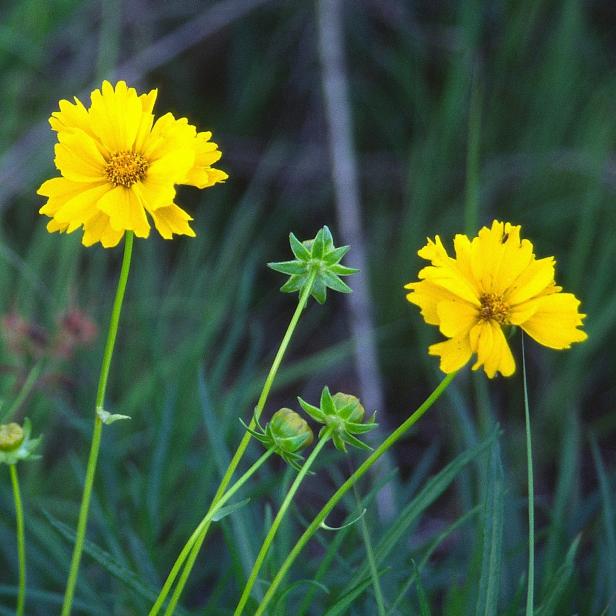
Gardeners are forever trying to change things back to the way they were before — before bulldozers, before Lewis and Clark, before Eve took a bite of that silly apple and got us kicked out of Eden. We stroll through arboreta and botanical gardens and resolve to make our own gardens as beautiful, and when finished, to start on the abandoned lot in the next block and the park on the corner. And maybe no plant embodies that desire so well as the lovely wildflower.
For better or worse, the wildflower grows in a mixture of myth, fantasy and marketing hype. We are captivated by the Hollywood flashback scene, a young girl skipping through a meadow of bluebells and buttercups, but forget that the 20-second shot involved overnight air shipments from nurseries around the world, a team of horticulturists and truckloads of cash.
Seed companies happily cater to these fantasies by selling wildflower seed mixtures which, to believe the packaging, you need only scatter upon the ground, rake lightly and then wait for your garden to become saturated with colorful blossoms, attracting a plethora of rare and beautiful butterflies and hummingbirds.
There are two important realities that these fantasies conveniently set aside; namely, soil preparation and weed control. Thus, if you have visions of converting your entire chemical and mower dependent lawn into a "carefree" meadow, I offer two simple words of advice: start small.
Sites, Soil and Seed
For your own mini-meadow, choose a full-sun location (minimum six hours). It need not be irrigated, but within hose-dragging distance is helpful for in the beginning. The bed will need frequent light waterings (twice daily) for the first couple of weeks. Once established, it should require little beyond what Mother Nature provides.
At my home in North Carolina, the hard-packed clay turns soil preparation into real work. Somehow I managed to convince my wife that a large, rear-tined tiller was a real necessity, which makes things considerably easier. In the absence of such brute horsepower, a spade or mattock will be your tool of choice. A soil analysis to determine fertilizer needs is always desirable.
Rather than buying a commercially-prepared seed mixture, I prefer to mix my own. The ideal mix will contain plants of similar height that have large, quick-germinating seeds. Many native plants are quite slow to germinate, so consider broadening your palette. Zinnias, cosmos and sunflowers are ideal for beginners and come in an endless variety of form and color. See the table below for some additional suggestions, but be sure to check with local experts to find plants adapted to your region and climate.
The seed from home centers, nurseries and discount stores is fine to use but usually comes in small packages. If you're planting, say, a 50-foot strip next to a fence, it will be much more economical to order seeds from a company that sells bulk quantities.
Determining the ideal seeding rate will take some trial and error. Check with your seed supplier for recommendations. Otherwise, a good starting point would be a quarter pound per 1000 square feet, or about a half-ounce per 100 square feet.
Sow after the danger of frost has passed. Mix the seed with vermiculite or a seed starting mix to get more even distribution. Once sown, rake the bed lightly to cover the seed and get good soil-seed contact. A light layer of straw mulch will keep it in place and conserve moisture.
Don't overlook the possibility that birds will view your carefully planted seeds as a fly-in diner. If you anticipate a problem, consider sowing on the heavy side or using one of the bird repelling devices (e.g., motion-activated sprinklers, reflective tape). You could also erect an elaborate scaffold of stakes and strings and cover it with bird netting. Then again, you could just replant.
I'll pass along the oft-repeated suggestion to plant a few of each seed in pots. That way, you'll have a sample for comparison and will know which of the tiny plants that come up are flowers and which are weeds (and there will be plenty of the latter). I pass along this suggestion knowing full well you are unlikely to follow it, as I have failed to follow it so many times in the past. Plan B is to watch and wait. You will get it wrong more than once, pulling up dozens of seedlings that cost you $25 an ounce and finding that other delicate plants you so lovingly nurtured are noxious weeds that will take you three seasons to completely eradicate. For better or worse, that's the way garden lessons are learned.
Yes, weeds are inevitable, and in all but the smallest beds, it will be impractical to remove them by hand or hoe. Chemical-wise, products containing fluazifop or sethoxydim may be an option for grass weeds, but broadleafs are a lost cause. My own strategy is to do all I can in the way of soil preparation to give the wildflowers a head start. By the end of the season, they will have lost the battle and it will be time to mow it all down.
Even if your seed mix contains perennials, treat it as an annual color bed that will need replanting each spring. Although some of the perennials may survive to the next planting season, I suspect it will be simpler to till up the whole bed and start anew. Collecting and saving seed at the end of each season will reduce the cost. If you were hoping for a perennial meadow that would never need replanting, keep in mind that you will be perennially battling the weeds. I'm placing my bets on the weeds.
There's a phrase about weeds and wildflowers that's so sappy and improbable I won't repeat it. I will, however, offer a slightly modified wish. May you find a wildflower among the weeds. May you water it and nurture it and find peace in its beauty. May you carefully harvest a few seeds so that next season where one stood, now there are three. No, we can’t really go back. But in this way we'll build the new garden, one tiny meadow at a time.
Easy-to-Grow Flowers for a Mini-Meadow
Although many of these plants are non-native, they are ideal for the beginner.
- Cosmos (Cosmos bipinnatus), 7-10 days to germination, 40 to 48 inches tall. Among the easiest to grow, good for cutting but short vase life. Native to Latin America.
- Marigold (Tagetes spp.), 4-7 days, up to 36" tall. Look for taller varieties. Native to Mexico and Central America.
- Bachelor button (Centaurea cyanus), 14 days, 24" tall. Also known as cornflower. Good for cutting. Native to Europe.
- Zinnia (Zinnia spp.), 3-7 days, 18 to 30" tall. Many varieties available. Excellent for cutting. Native to the Southwest in the U.S.
- Sunflower (Helianthus annuus), 7-14 days, 24 to 36" tall (be sure to look for dwarf varieties). Short blooming season. Native to North America.
- Coreopsis (Coreopsis tinctoria), 5-10 days, 18 to 24" tall. Long-blooming and drought tolerant. Native to the Plains region of the U.S.
- Mexican sunflower (Tithonia spp.), 7-14 days, 30 to 48" tall. Long-blooming and drought tolerant. Native to Mexico and Central America.
Note: Check with your local nursery or agricultural extension agent for specific recommendations for your area, especially regarding native plant options.
—Paul McKenzie lives, gardens and teaches high school horticulture in Piedmont, NC.







